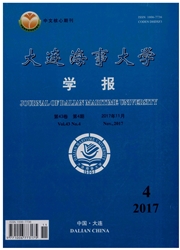

 中文摘要:
中文摘要:
传统的Mean Shift(MS)算法只能对发生平移和尺度变化的目标进行跟踪,而对于具有相似性变换或者更复杂的仿射变换的目标跟踪效果很不理想或无法跟踪。为了解决这一问题,提出了两种基于MS的改进算法。第一种算法针对仿射变换,根据奇异值分解理论,仿射变换矩阵可以分解成两个旋转矩阵和一个对角矩阵的乘积,在此基础上建模了一种新的候选目标模型。通过Bhattacharyya系数将目标跟踪问题转化成以仿射变换参数为变量的最优化问题,推导相关参量的一阶偏导数并令其为零从而得出相对于仿射变换的MS算法。另外,针对进行相似性变换的目标也提出了一种新的候选目标模型,并用类似的梯度下降算法估计目标的平移向量和旋转角度。实验结果表明,提出的算法能够跟踪具有相似性变换或仿射变换的目标,比传统的MS算法具有更好的跟踪性能。
 英文摘要:
英文摘要:
Traditional Mean Shift (MS) algorithm can only follow objects with translation and scale change, and fails to handle objects with similarity transformation or complex affine transformation. To address this problem, the paper presents two improved algorithms. The first one focuses on the affine motion. According to the theory of Singular Value Decomposition, the affine matrix can be factored into product of two rotation matrixes and one diagonal matrix, based on which a new candidate model is proposed. With Bhattacbaryya coefficient as a similarity function, the object tracking is formulated as an optimization problem, and the corresponding MS algorithm can be derived by calculating the first derivative of the similarity function with respect to affine parameters and setting them to be zero. Furthermore, a new candidate model is proposed that handles similarity transformation, and the corresponding MS algorithm can be obtained that estimates the translation vector and rotation angle. Experimental results show that, the proposed algorithms can track objects with similarity or affine tranformations, and have better tracking performance than the traditional one.
 同期刊论文项目
同期刊论文项目
 同项目期刊论文
同项目期刊论文
 期刊信息
期刊信息
